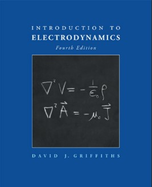Solution Found!
A piece of wire bent into a loop, as shown in Fig. 10.5,
Chapter 10, Problem 12P(choose chapter or problem)
A piece of wire bent into a loop, as shown in Fig. 10.5, carries a current that increases linearly with time:
\(I(t)=k t \quad(-\infty<t<\infty)\)
Calculate the retarded vector potential A at the center. Find the electric field at the center. Why does this (neutral) wire produce an electric field? (Why can’t you determine the magnetic field from this expression for A?)
Figure 10.5
Questions & Answers
QUESTION:
A piece of wire bent into a loop, as shown in Fig. 10.5, carries a current that increases linearly with time:
\(I(t)=k t \quad(-\infty<t<\infty)\)
Calculate the retarded vector potential A at the center. Find the electric field at the center. Why does this (neutral) wire produce an electric field? (Why can’t you determine the magnetic field from this expression for A?)
Figure 10.5
ANSWER:
Step 1 of 5:
In this problem our aim is to determine the retarded vector potential A at the center of the wire loop.
